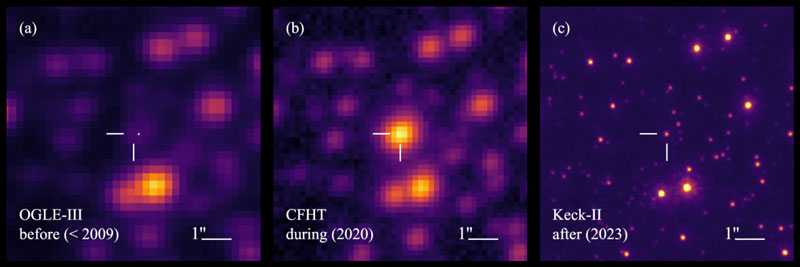In about 4.5 billion years, the Sun will turn into a red giant and shed its shell. In this cataclysm, all planets up to Mars, including Earth, will be destroyed. If it’s any consolation, life as we know it on Earth will become impossible long before this event. The dumping of the outer layers of the Sun will put the last point in the fate of our planet, destroying it as a physical object. But the Earth has a chance to survive – as it turned out, this has already happened in our galaxy.

Artist’s representation of a white dwarf system. Image source: Adam Makarenko / W.M. Keck Observatory
About 4,200 light-years away, astronomers have discovered a white dwarf system that appears to be a candidate for Earth-like planet. A white dwarf is the core of a star like the Sun. At the end of its life, the star turned into a red giant and shed its outer shell, and the core shrank and began to cool, becoming a white dwarf for billions and billions of years. This dead star had a supposedly rocky planet 1.9 times more massive than Earth. Moreover, the planet is located only 2 AU. from your star. This means that the expanded giant and the impact of the shell that flew off from it did not erase the planet from the map of the local system. The planet survived the death of the central star, which gives the Earth a chance to also survive in the distant future.
But that’s not the most surprising thing. The method by which the white dwarf system was discovered is striking. She was lucky to pass over a very bright distant star (26,100 light years away from Earth) and find herself on the same line connecting Earth and the star. This created the microlensing effect. The distant star suddenly became 1000 times brighter, which astronomers noticed and began to observe it.

Observing the sky before, during and after a microlensing event. Image source: Keming Zhang et al. / Nature Astronomy, 2024
Taking measurements over several years, scientists collected enough data to model the composition and parameters of the white dwarf system. The best fit was a model in which the white dwarf would host an Earth-like rocky planet and a brown dwarf with a mass of about 30 Jupiter masses. The planet was supposed to orbit the star at a distance of 2 AU, and the brown dwarf at a distance of 20 AU.

Two options for the organization of the white dwarf system and two options for the development of events in the field of star death
Before the star turned into a red giant, such an Earth-like planet should have orbited a star about twice the mass of the Sun at a distance of about 1 AU. But the shedding of the shell during the death of the star threw it away. This scenario is possible for both the Earth and the Sun. Therefore, it is doubly interesting to earthly science.